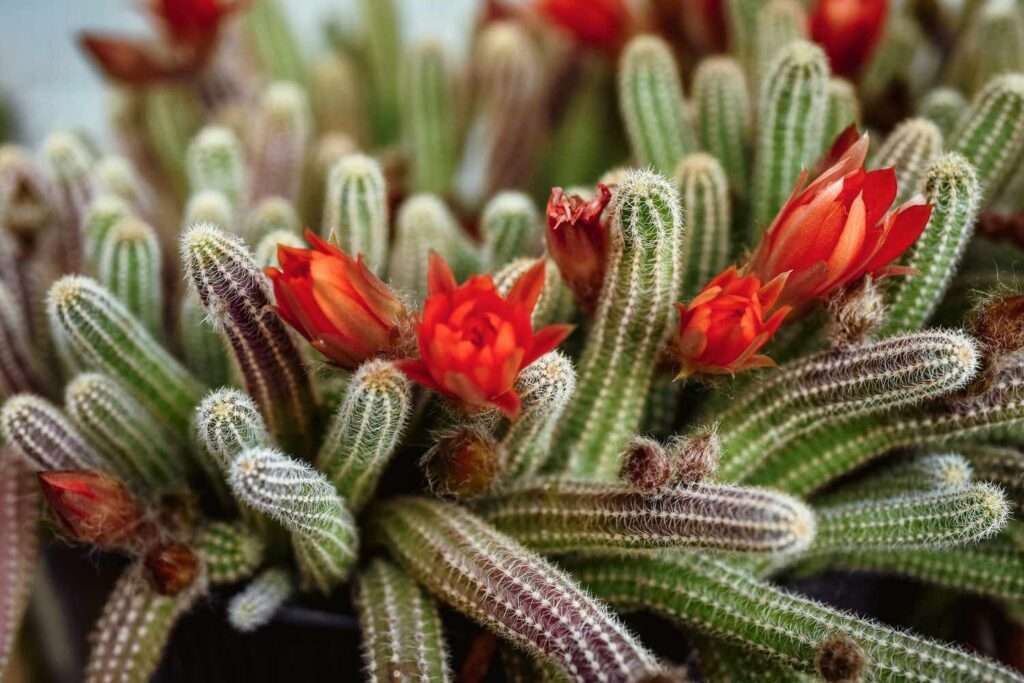
The peanut cactus (Echinopsis chamaecereus) is a branching cactus with finger-like branches and a clustering and trailing growth habit. It is an excellent option for hanging baskets because of its growing behavior. Each ribbed stem has a diameter of half an inch, can reach a length of 6 inches, and is coated in tiny white bristles.
The peanut cactus may appear to have sharp spines, but they are actually quite soft. However, it is still not a good idea to touch them because the tiny bristles could still pierce the skin and be uncomfortable. The peanut cactus, however, is softer than some of its spikier relatives, making it simpler to cultivate and manage.
Care Guide
Light
The peanut cactus thrives in bright, sunny environments, like the majority of cacti do. It cannot stand being cultivated in complete darkness or low light. When grown outside, place the peanut cactus in a spot that receives direct sunlight. This cactus might benefit from some shade in areas that are frequently hot in order to shield it from the harsh afternoon sun. When cultivated indoors, put the peanut cactus in the room that receives the most sunlight. The best window to use is one that faces west or south.

Soil
The peanut cactus prefers sandy, well-draining soil to grow in its natural environment. When planting the peanut cactus outside, make sure the soil has been heavily amended with sand and perlite to ensure that water drains quickly from around the roots. The peanut cactus is vulnerable to root rot and cannot withstand prolonged exposure to water. Normal cactus or succulent potting soil works best for growing the peanut cactus inside.
Water
Due to its thick, water-storing stems, the peanut cactus is drought tolerant but is also readily overwatered. Between watering, allow the soil to completely dry out before watering again deeply and thoroughly. During the winter, when the cactus is dormant, reduce watering.
Humidity and Temperature
This cactus does not perform well in humid situations; it prefers hot, dry climes. Only in USDA zones 10a to 11b can the peanut cactus be grown outdoors year-round because it is not cold hardy. Throughout order to simulate its native habitat and promote blooming, the cactus benefits from being exposed to milder temperatures throughout the winter. Ideal conditions range from 32 to 45 degrees Fahrenheit (0 to 7 degrees Celsius). The peanut cactus is often tolerant of average indoor humidity and temperature ranges; nevertheless, avoid planting it in rooms that are notoriously humid, such the bathroom.
Fertilizer
The peanut cactus does not require frequent fertilization because it is not a heavy feeder. However, it can profit from monthly fertilization with a balanced, low-strength fertilizer throughout the first few months of the growing season. The peanut cactus responds well to fertilizers made for succulents and cacti.
Table





